New Data: Real-Time Payments Become A Make-Or-Break Reality For Financial Institutions
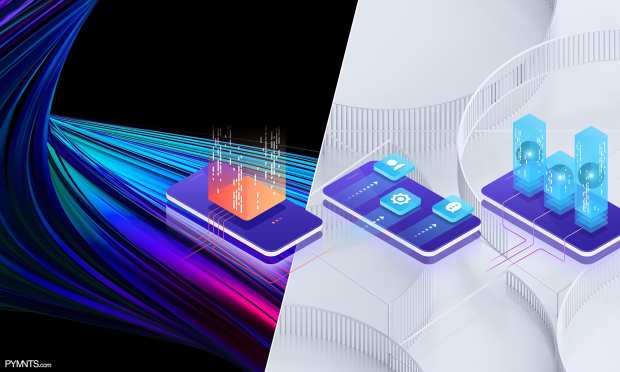
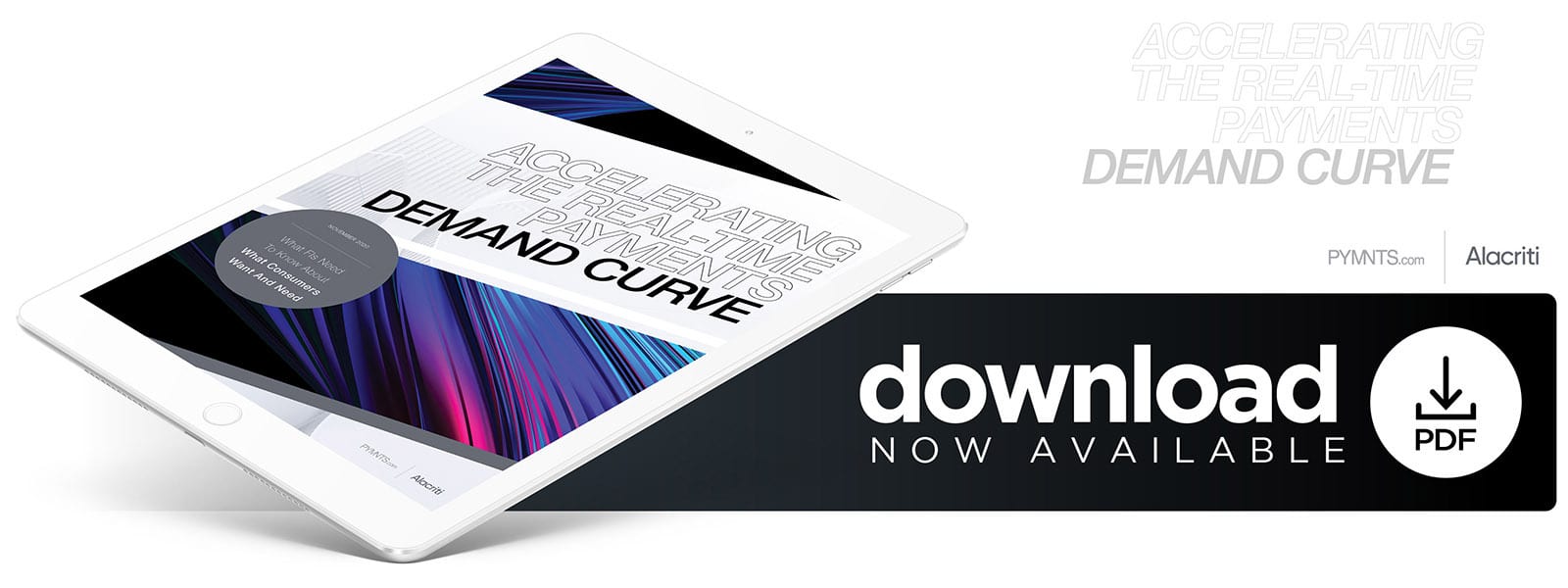 Consumers today have no shortage of payment options. From traditional physical methods like cash and checks to emerging digital ones such as mobile wallets and payment apps, there are key differences that determine which options they use and when. Consumers tend to use debit and credit cards the most, but they still leverage checks to pay for services such as tuition and rent. Peer-to-peer (P2P) options are meanwhile typically reserved for transactions between friends or family members.
Consumers today have no shortage of payment options. From traditional physical methods like cash and checks to emerging digital ones such as mobile wallets and payment apps, there are key differences that determine which options they use and when. Consumers tend to use debit and credit cards the most, but they still leverage checks to pay for services such as tuition and rent. Peer-to-peer (P2P) options are meanwhile typically reserved for transactions between friends or family members.
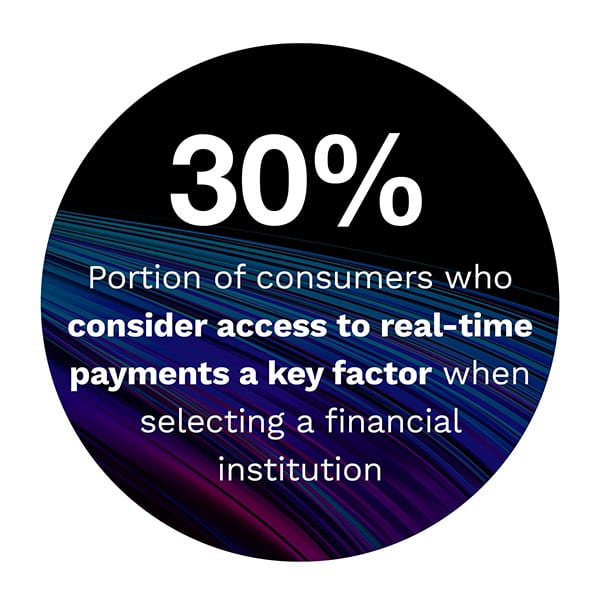 Regardless of which payment methods they use, consumers often believe that their funds are sent and received in real time — thus making them real-time payments in their eyes. However, PYMNTS’ research reveals that this belief is often misplaced.
Regardless of which payment methods they use, consumers often believe that their funds are sent and received in real time — thus making them real-time payments in their eyes. However, PYMNTS’ research reveals that this belief is often misplaced.
In Accelerating The Real-Time Payments Demand Curve Report, a PYMNTS and Alacriti collaboration, we surveyed more than 2,000 consumers in the United States who have checking or savings accounts to determine how they make payments, whether they would be willing to pay fees to access real-time options and whether they would be willing to switch providers to do so.
Our research found that 36.2 percent of consumers say they have used real-time payments, even though the options they leverage either do not support real-time capabilities or are not conducted in real time. This reveals that many payors believe their transactions have been completed and their obligations have been fulfilled the moment they receive notifications that payments went through, even though some methods — even digital ones — can take days to reach recipients and settle in their accounts.
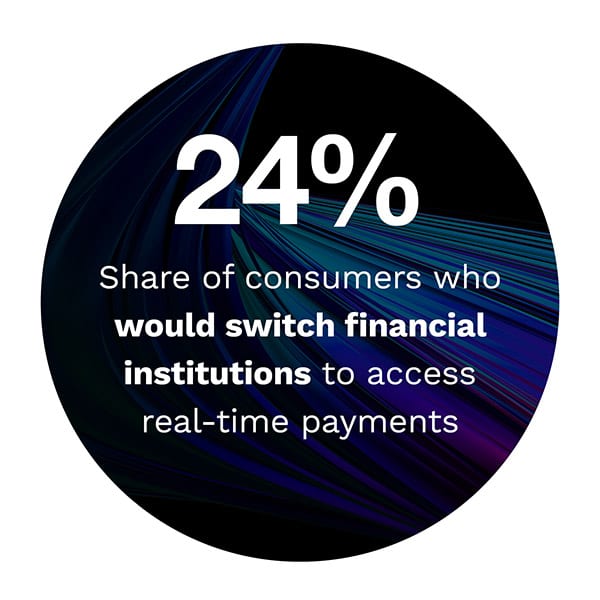 Despite this apparent lack of real-time payments knowledge, consumers do express interest in using real-time methods once they truly understand what these options entail. The allure of real-time payments is such that they are even willing to pay fees to access such options, at least in certain instances. Forty percent of consumers say they would be willing to pay fees for real-time payment capabilities when making tuition payments, while 35 percent say the same about paying contractors and 25 percent express the same sentiment regarding P2P payments.
Despite this apparent lack of real-time payments knowledge, consumers do express interest in using real-time methods once they truly understand what these options entail. The allure of real-time payments is such that they are even willing to pay fees to access such options, at least in certain instances. Forty percent of consumers say they would be willing to pay fees for real-time payment capabilities when making tuition payments, while 35 percent say the same about paying contractors and 25 percent express the same sentiment regarding P2P payments.
Consumers’ demands for real-time payments do not stop there, however. A significant share would even consider switching to financial institutions (FIs) that offer real-time capabilities if their current FIs do not. Three out of 10 consumers say access to real-time payments is a key factor when determining which FIs will win their business, while a sizable 23.5 percent say they would switch to financial services providers that offer these options.
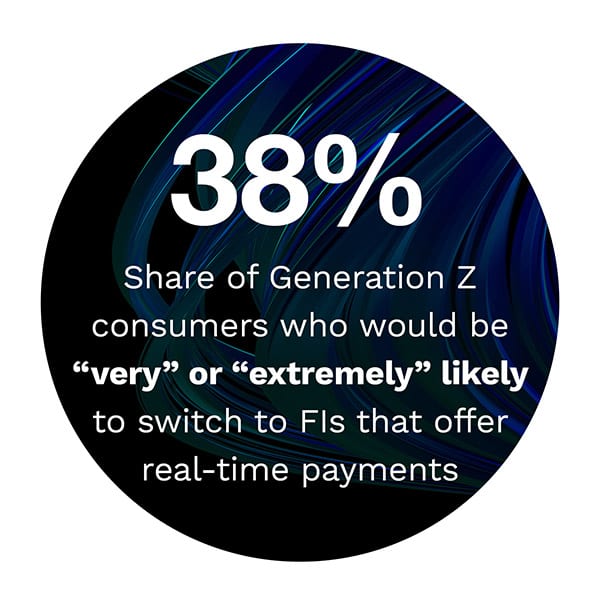 Younger consumers are also more likely to make the switch if their real-time payment needs are not being met. We found that roughly 40 percent of Generation Z consumers would change FIs to be able to make real-time payments, and similar shares of consumers living paycheck to paycheck and struggling with bills as well as those who monitor their accounts after every transaction say the same.
Younger consumers are also more likely to make the switch if their real-time payment needs are not being met. We found that roughly 40 percent of Generation Z consumers would change FIs to be able to make real-time payments, and similar shares of consumers living paycheck to paycheck and struggling with bills as well as those who monitor their accounts after every transaction say the same.
These are just a few of the insights illuminated in Accelerating The Real-Time Payments Demand Curve: What Banks Need To Know About What Consumers Want And Need. To learn more about what consumers desire when it comes to real-time payments, download the report.
